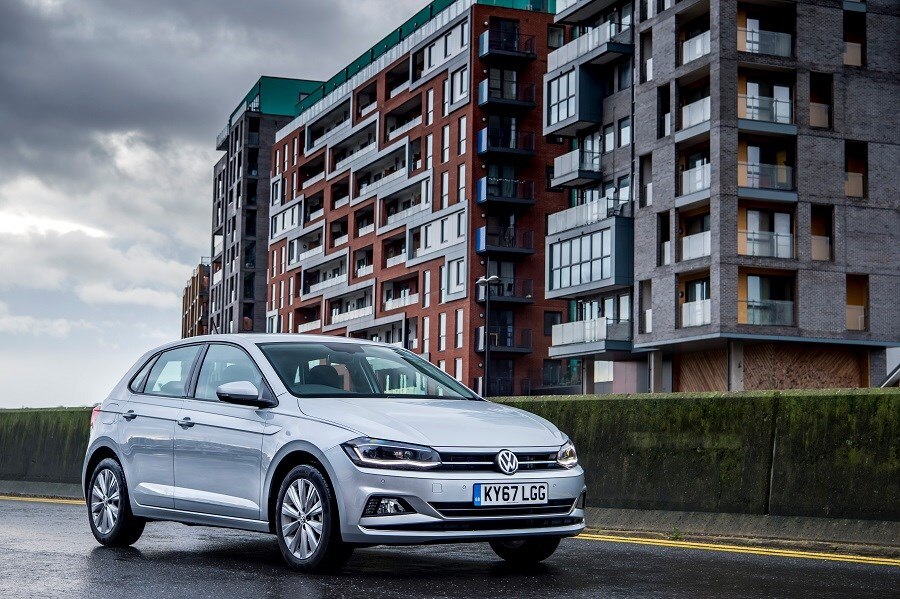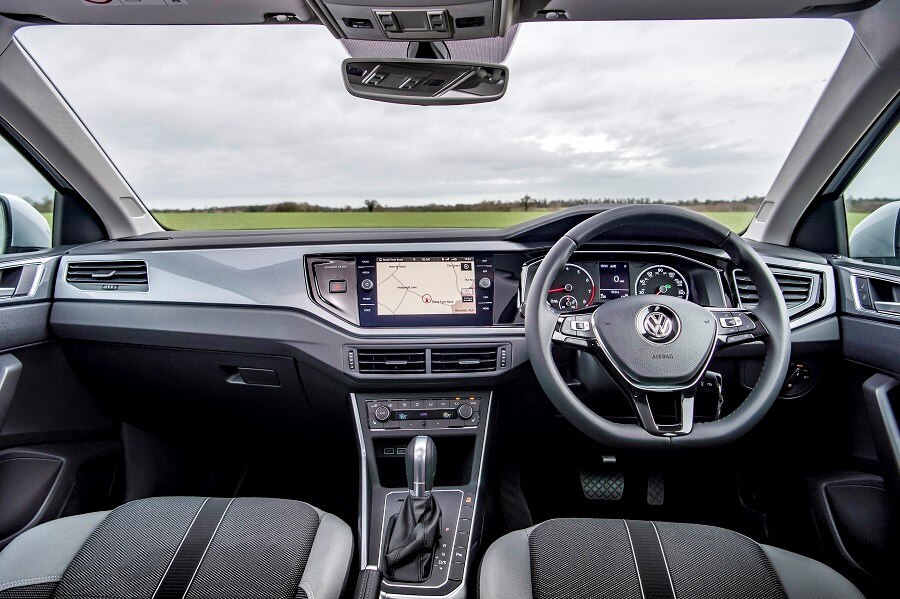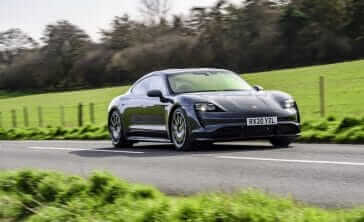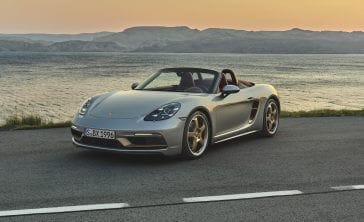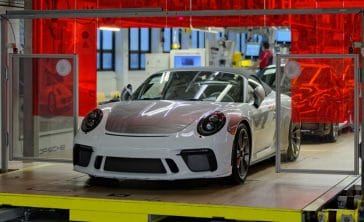Model Review
Porsche has a long history of making stunning supercars and sports cars, but until 2002, the firm had never built a production model with more than two doors. That changed with the Cayenne SUV, which was a huge sales hit. To help expand that success further to other segments, Porsche ventured into the luxury car world with this – the Panamera.
Many weren’t hugely complimentary about the first car’s styling, and, in truth, it was a bit of an ugly duckling to look at. However, that didn’t compromise its driving ability and stunning interior, which is where the model excelled.
After launching models with pure petrol and diesel powertrains in various states of tune, Porsche decided to expand that further in 2013 with the launch of a new plug-in model, which is known as the E-Hybrid.
Electrification allows for much-improved fuel economy and lower company car costs, as well as extra performance thanks to the torque produced from the electric motor.
Latest model
Arriving in June 2016, the second-generation Panamera was no longer the ‘ugly Porsche’, it was a sleeker, more muscular and more imposing model, which offered one of the best interiors in the business. It comes with two seven-inch displays as dials, along with a huge 12.3-inch touchscreen, and makes the interior one of the key highlights of the updated model.
The E-Hybrid was offered from launch, while Porsche also added an even more powerful Turbo E-Hybrid in March 2017, which offers astonishing performance, but equally low running costs if you have regular access to a charging point to help keep the electric range topped up.
In 2017, Porsche added a stunning five-door estate variant to the Panamera line-up, which is known as the Sports Turismo. While it’s not much more practical than the standard five-door hatchback, it offers another derivative to the Panamera line-up, which still has lots of appeal. It’s offered with the same powertrain options as the standard car.
Value for money
As with any Porsche, value won’t be the main reason for purchasing one. The Panamera is an expensive car, with prices starting from £72,890 for the standard model and £83,718 for the plug-in variant. However, it at least offers excellent performance, as well as plenty of standard equipment — including 19-inch alloy wheels, LED headlights, electrically-operated and heated front seats and an electric boot lid for the price. The more powerful Turbo S E-Hybrid has limited appeal, with prices starting from an eye-watering £138,723, although it offers the same level of performance as you could expect from a supercar.
It’s worth noting that the Sports Turismo is only around £2,000 more expensive than the hatchback, which makes it a decision based on which one you prefer the look of, rather than a price-based decider.
First-generation Panamera E-Hybrids are now quite good value for money. The cheapest starts from £36,000 on the used market, which buys a 2014 model with plenty of extras and around 60,000 miles on the clock.
As for the latest Panamera, high demand and limited supply is causing used values to remain very high. At the time of writing, even the cheapest model started from £80,000 for a 2017 model with 8,000 miles on the clock, which is hardly any depreciation at all. Nearly-new models were also advertised as more expensive than list price.
Looks and image
The first-generation Porsche Panamera wasn’t a particularly attractive model, although the latest car is far more appealing. The sleek new shape is a key attraction and avoids the lumpy rear end of the last car. Despite that, it’s still arguably not fantastic to look at in hatchback form, as the rear overhang just looks a bit untidy. However, the Sport Turismo is a true delight to look at in our opinion, with the estate’s sloping tailgate seemingly a better fit to the Panamera’s shape, but that’s something for you to decide on…
While its exterior looks might still be questionable, what can’t be disputed is just how classy and beautiful the Panamera’s interior is. The latest car set the benchmark for future Porsches, with a beautiful and luxurious cabin which has a huge 12.3-inch touchscreen as its show-stopping feature. Stunning digital dials are also a fantastic addition, and as with all Porsche models, there’s a huge range of interior and trim options available to customise your model. We also like the more clutter-free layout of the new Panamera’s interior, which replaces a rather button-heavy interior seen on past models from the German manufacturer. There are few giveaways to show that the Panamera is a hybrid, rather than a petrol, but subtle Acid Green detailing to the cabin as well as green brake callipers and badging help to show its electric aspects.
The E-Hybrid is also exhilarating to drive, with the Panamera being a fantastically poised and balanced model to drive – particularly for a car of this size. The torque from the electric motor is also a big bonus, while the Turbo S E-Hybrid delivers ferocious performance, which is not dissimilar from Porsche’s fantastic supercars. Standard fit all-wheel-drive also delivers faultless traction in both wet and dry conditions. But aside from performance, the Panamera delivers a smooth, relaxed and comfortable ride that makes long journeys absolutely effortless.
Space and practicality
When traditionally buying a Porsche, practicality would be firmly at the back of the queue of priorities. However, with Porsche now offering multiple SUVs, its cars have to be increasingly spacious, and that’s the same with the Panamera. The boot is by no means class-leading, but its 405-litre luggage bay should prove to be plenty for most. Dropping the split-folding rear seats down increases the space on offer to 1,245 litres. The hybrid is ever so slightly less practical than the standard Panamera, but it’s hard to tell the difference between them. The Sport Turismo offers a marginal 25 litres more of boot space, which increases the load bay to 425 litres.
The Panamera offers excellent rear seat space, with plenty of headroom and legroom for passengers. The Panamera is a strict four-seater, which is aimed more at executive travel than family duties, so two separate rear seats are linked by a central storage tunnel, which can also have its own climate control functions. An Executive version is also offered on the hatchback, which increases rear legroom.
As for safety, the Panamera has never been tested by Euro NCAP, as it only sells in small numbers. Although there is little reason to be concerned about the model’s safety, with a host of safety items included in the price, as well as a radar-guided system that can spot obstacles ahead in the road and brake or issue warnings accordingly. It lacks the same safety kit fitted to other German rivals, though.
Engines
The standard Panamera 4 E-Hybrid utilises a 325bhp 2.9-litre V6 petrol engine paired to an electric motor to produce a total of 456bhp and 700Nm of torque, which delivers excellent performance. It can sprint from 0-60mph in 4.4 seconds and keep going onto a top speed of 172mph. Power is delivered to all wheels by a superb eight-speed PDK automatic transmission.
If you’re power hungry and think that’s not enough performance for you, Porsche offers the ballistic Turbo S E-Hybrid, which delivers supercar-rivalling performance. It utilises the hugely powerful 542bhp 4.0-litre V8 petrol engine paired to an electric motor, which produces a combined 671bhp, which is frankly ludicrous in a luxury car. But the performance is astonishing, with the model taking just 3.2 seconds to accelerate to 60mph, while also having a top speed of 192mph. It utilises the same PDK gearbox and all-wheel-drive setup as the standard E-Hybrid, and proves that plug-in hybrids do not have to be boring.
Running costs
Porsche’s official running cost figures need taking with a pinch of salt, as they are highly unrealistic to achieve in real-world conditions. The standard E-Hybrid is said to manage a claimed 85.6mpg, with CO2 emissions of 62g/km, while the Turbo S E-Hybrid can return a claimed 80.7mpg, with 74g/km. Unless used around towns and cities consistently, and on small trips, the Panamera probably won’t be much cheaper to run than a standard petrol model, but it poses huge benefits to company car users with low Benefit-in-Kind, which will be significantly less than the normal petrol Panamera.
Porsche claims both hybrids offer an electric range of 30 miles, which is a decent figure for a plug-in hybrid model, although it still means it’s best for those covering short distances.
Unsurprisingly given all this luxury and performance, the Panamera will not be cheap to insure, with both models being placed in the top insurance group of 50.
Things to look for
With the Panamera being quite a rare car, not a lot is known about its reliability — particularly the even rarer E-Hybrid variant. The only thing therefore worth noting is that Porsche recalled 197 UK Panameras in 2018 over an issue with the rear axle anti-roll bar, although the problem has now been solved.
Rivals
There are very few performance plug-in hybrid models in this category, so the closest rivals if you view the Panamera as a luxury model are the Mercedes S500e, BMW 740e and Range Rover P400e, which are all plug-in hybrid luxury models. The all-electric Tesla Model S is also a worthy option thanks to its long electric range.
Depreciation
Porsche has an excellent reputation for its cars holding their value well, and the Panamera E-Hybrid is no exception. Oversubscribed order books are resulting in long waiting lists for new plug-in hybrid Panameras, which means that used values are remaining high.
